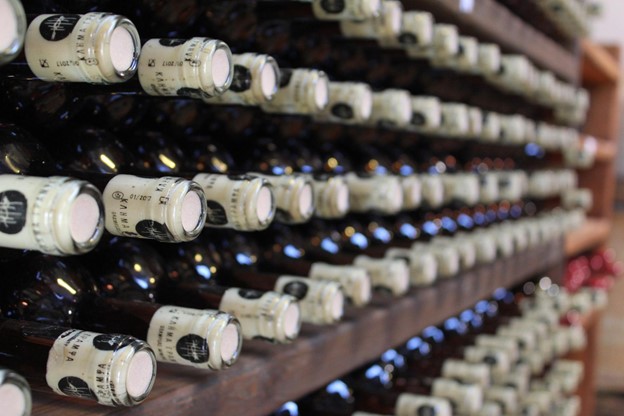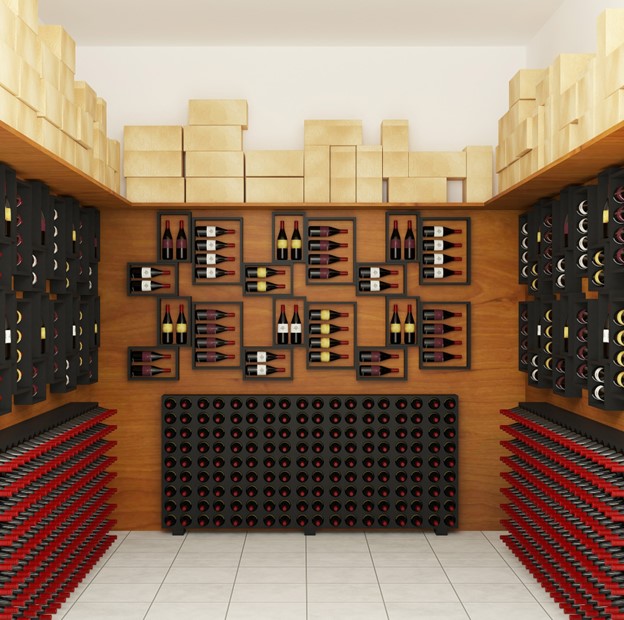How To Rack Wine? Winemaking is a complex process, and mastering the details can be what makes or breaks your wine.

The process of racking, which is typically done 2-4 times throughout the winemaking process, allows for proper ventilation and aeration.
This in turn can help prevent off-flavors from occurring as well as improve clarity by letting oxygen flow through your wines’ contents more easily than if they were left packed tightly of their own accord.
Wine has a very short life span when left unpurified, so it’s important to clarify from experience winemakers as soon as possible. The sooner you do this process the better.
What Is Racking
Racking wine is the process of transferring it from one container to another, usually with the intention of separating sediment from the wine. It is a common practice when making wine at home, and can also be done professionally in a winery.
Racking means siphoning wine from one container into another, so as to leave any sediment behind. In fact, that’s what racking is for “to leave all my waste behind.”
The removal of sediments from fermented wine is an important part in preserving its taste. Racking can occur up to four times during the batch’s fermentation process for certain red wines, but it must be done carefully so as not to disturb or introduce any unwanted flavors into your beautiful beverage.

You know what they say: less is more. Racking your wine will give you a perfect, clear glass after every pour without any pesky sediments getting in the way!
Ways To Rack Wine
There are a few different ways that you can rack wine, but the most common method is to use a wine racking cane and a siphon.

- Sanitize all of your equipment. This is important because you don’t want to introduce any new bacteria to your wine.
- Place the racking cane in the bottle of wine that you will be transferring from.
- Insert one end of the siphon into the new container where you will be transferring your wine.
- Gently lower the other end of the siphon tube into the wine, making sure not to disturb any sediment at the bottom of the bottle.
- Pinch or clamp off your racking cane so that it can no longer be drawn out of the wine in the other container.
- Slowly release your racking cane and allow the wine to flow through the siphon into your new container.
- Repeat this process until you have transferred all of your wine, making sure to periodically pinch or clamp off your racking cane to keep sediment from flowing into your new container.
- Discard the sediment that is left in the original bottle of wine.
- Cork or screw on a lid tightly to your new container of wine and store it in a cool, dark place until you are ready to drink it.
Few Things To Keep In Mind When Racking
Racking wine is a simple process, but it is important to keep a few things in mind.

- First, be sure to sanitize all of your equipment before you begin, as this will help prevent the introduction of any unwanted bacteria into your wine.
- Additionally, take care not to disturb any sediment at the bottom of your bottles when transferring the wine.
- Finally, store your newly racked wine in a cool, dark place until you are ready to enjoy it. With these tips in mind, you can easily and safely rack your own wine at home.
When Should You Rack Your Wine?
Racking wine is more of an art than a science, and many seasoned vintners disagree about when different wines should be racked.
- When shifting your wine from the primary fermenter to the secondary fermenter, there are three periods when you should rack your wine.
- When transferring your wine from a secondary fermenter to a bulk aging container.
- Rack either for clarity or in and out of the oak vessel after fermentation.
This will allow the different wines in each tier of storage to have more space and benefit from being aired out, which can include releasing natural chemicals that age them beautifully without any human intervention!
The Fist Level Of Racking
The first racking also known as the primary fermentation process is usually done after the wine has been fermenting for 5-7 days. This recommended time period was chosen for a variety of reasons:
- The rate of yeast production is progressively decreasing after reaching a high point
- Because the wine needs protection from outside pollutants, it must be transferred to a new container with an airlock.
- The majority of all the sediment level has already been deposited (likely up to 75 percent )
- The pulp from the fruit must be removed at this point to prevent the taste from becoming too harsh.
The Second Level Of Racking
After fermentation is finished, the wine should be quite clear, and there should be just a small quantity of sediment at the bottom of the container.
The second rack usually occurs one to two months after the first, although home winemakers should rely heavily on both their hydrometers and their senses to calculate specific gravity and, thus, alcohol concentration.
The Third Level Of Racking
The third Racking of Wine is the process of removing the sediment that has settled at the bottom of the wine barrel. This process is important because it helps to improve the taste and quality of the wine.
Additionally, it also helps to prevent the formation of tartrates in the wine. Tartrates are crystallized solids that can occur in the wine due to a chemical reaction.
The first step of the third Racking of Wine is to clean and sterilize all of the equipment that will be used for the process. This includes sterilizing all of your wine barrels, fermentors, and siphoning tubes.
The next step is to add some sulfur dioxide to the wine. This will help to prevent any unwanted bacterial growth that could potentially damage the wine.
The Fourth Level Of Racking
The fourth level of racking of wine is called fine racking.
Fine racking involves using a sieve or a nylon straining bag to filter out sediments in the wine, which can make it cloudy and less flavorful.
Fine racking is usually done about two weeks after the first batch of fermentation has finished. This gives time for the wine to settle and for any residual yeast to die off.
To perform fine racking, you first need to carefully pour your wine into a clean container, then use a sieve or straining bag to filter out unwanted sediments.
Once the wine has been filtered, it can be bottled or transferred back into its original vessel for aging or further fermentation.
Whether you are a seasoned winemaker or just starting out, fine racking is an important step in the wine-making process that can help you produce high-quality, flavorful wine.

